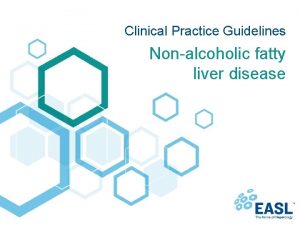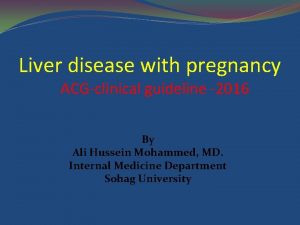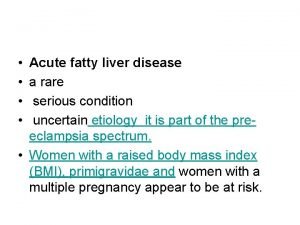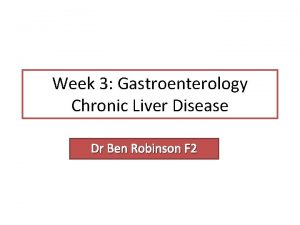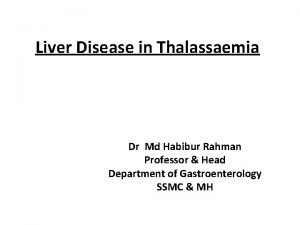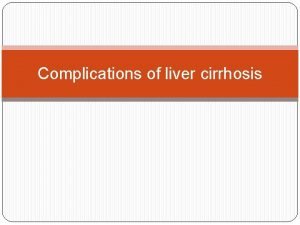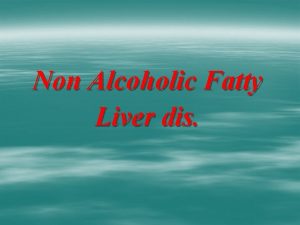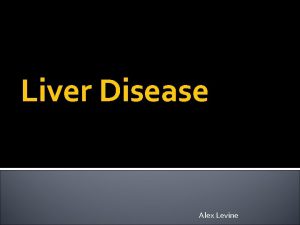FATTY LIVER Introduction Fatty liver disease can range







- Slides: 7

FATTY LIVER

Introduction � � � Fatty liver disease can range from fatty liver alone (steatosis) to fatty liver associated with inflammation (steatohepatitis). This condition can occur with the use of alcohol (alcohol-related fatty liver) or in the absence of alcohol (nonalcoholic fatty liver disease [NAFLD]). Fatty liver disease is now the most common cause for elevated liver function tests in the United States. Fatty liver can be associated with the use of alcohol. This may occur with as little as 10 oz of alcohol ingested per week.

Pathopysiology � � Fatty liver is the accumulation of triglycerides and other fats in the liver cells. In some patients, this may be accompanied by hepatic inflammation and liver cell death (steatohepatitis). Potential pathophysiological mechanisms include the following: (1) decreased mitochondrial fatty acid beta-oxidation, (2) increased endogenous fatty acid synthesis or enhanced delivery of fatty acids to the liver, and (3) deficient incorporation or export of triglycerides as very low-density lipoprotein.

Clinical Manifestions � � � Most patients with fatty liver are asymptomatic fatigue, malaise, or upper abdominal discomfort Symptoms of liver disease, such as ascites, edema, and jaundice, may arise in patients with cirrhosis due to progressive NASH Hepatomegaly is common Splenomegaly and stigmata of portal hypertension (eg, ascites, edema, spider angiomas, varices, gynecomastia, menstrual disorders) may occur in patients with cirrhosis

Causes � The most common association with fatty liver disease is metabolic syndrome. This includes carrying the diagnosis of type II diabetes, obesity, and/or hypertriglyceridemia. Other factors, such as drugs (eg, amiodarone, tamoxifen, methotrexate), alcohol, metabolic abnormalities (eg, galactosemia, glycogen storage diseases, homocystinuria, tyrosemia), nutritional status (eg, overnutrition, severe malnutrition, total parenteral nutrition [TPN], starvation diet), or other health problems (eg, celiac sprue, Wilson disease) may contribute to fatty liver disease

Differential Diagnoses � All causes of liver cirrhosis

Investigations � � � CBC LFT U&E Iron studies Lipids Viral serology Autoimmune markers U/S CT MRI Liver biopsy
